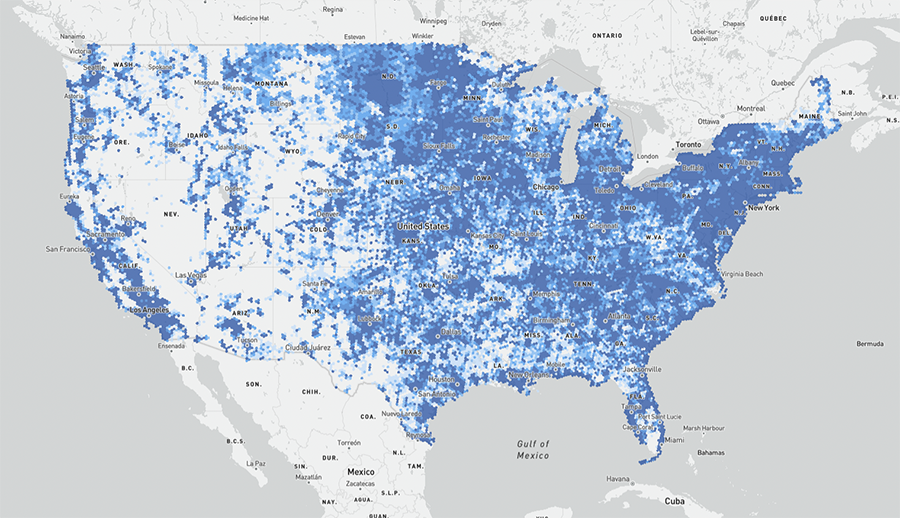On November 18, 2022, the FCC announced the publication of the new National Broadband Map. The map displays location-level information on fixed and mobile broadband availability data submitted by internet service providers through the FCC’s Broadband Data Collection (BDC).
Unlike previous FCC broadband availability maps, consumers, governments, service providers, and other entities can now dispute the data submitted by providers and contribute to an ongoing effort to improve the accuracy of the map. According to FCC Chairwoman Jessica Rosenworcel, this is “an ongoing, iterative process where we are consistently adding new data to improve and refine the maps”. The map’s release kicks-off the availability challenge processes (described below).
Why is the map important?
The new maps will serve as a basis for the National Telecommunications and Information Administration (NTIA) to allocate $42.5 billion in Broadband Equity, Access, and Deployment (BEAD) grants to states and territories next summer. The Colorado Broadband Office is working to ensure that the data accurately represents locations and services in Colorado in order to receive a fair allocation of BEAD funding.
Challenges
The BDC allows for providers, governments, Tribes, and consumers to continually improve and refine the accuracy of the broadband availability data through two challenge processes: one for the locations represented in the Fabric and another for the availability data submitted by service providers. Challenges must be submitted before January 13, 2023 to be included in the final version of the map that will be used to allocate Internet for All funding in the summer of 2023.
BDC Challenge Processes Overview
The FCC will hold a Bulk Fixed Availability Challenge Process Technical Assistance Workshop on November 30 at 4:00 p.m. ET to assist potential bulk filers in submitting bulk challenges to the fixed availability data. The workshop announcement is here. Interested parties need to register here to attend.
What Can be Challenged?
Fabric or Location Challenges
The points that appear on the map are part of the Broadband Serviceable Location Fabric (Fabric). Challenges can be submitted if:
- A location that meets the Commission’s definition of a Broadband Serviceable Location is missing in the Fabric.
- A location’s broadband serviceability is incorrectly identified.
- Information about a location is incorrect in the Fabric (e.g., the address or unit count for the location is incorrect).
- The location’s placement (i.e., geographic coordinates) is incorrect.
How to Submit a Location Challenge
Fixed Availability Challenges
The National Broadband Map shows internet availability, not network performance, affordability, or adoption. Therefore, only the availability of the service can be challenged. Fixed availability challenges are for fixed services such as fiber, cable, DSL, satellite, or fixed wireless. Challenges can include:
- Is the reported service not offered or is the reported speed not available for purchase?
- Did the provider deny a request for service or demand connection charges that exceed its standard installation charge?
- Did the provider fail to schedule or perform an installation within 10 business days of a request?
How to Submit an Availability Challenge
Mobile Availability Challenges
Challengers may dispute the availability of mobile broadband service using on-the-ground speed test data. An updated version of the FCC’s Speed Test app will collect mobile availability challenge data submitted by users.
How to Use the FCC Speed Test App to Challenge Mobile Coverage

